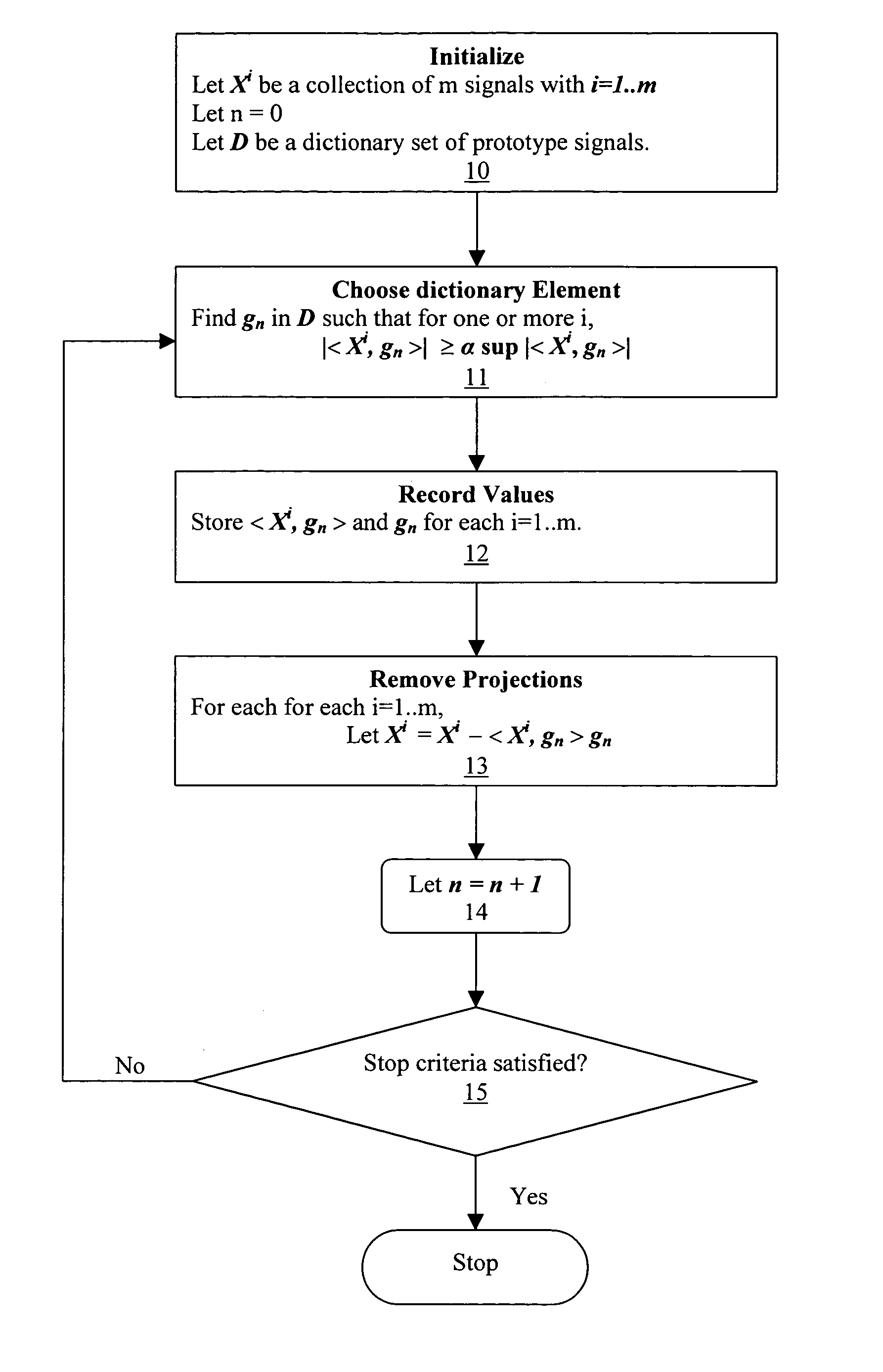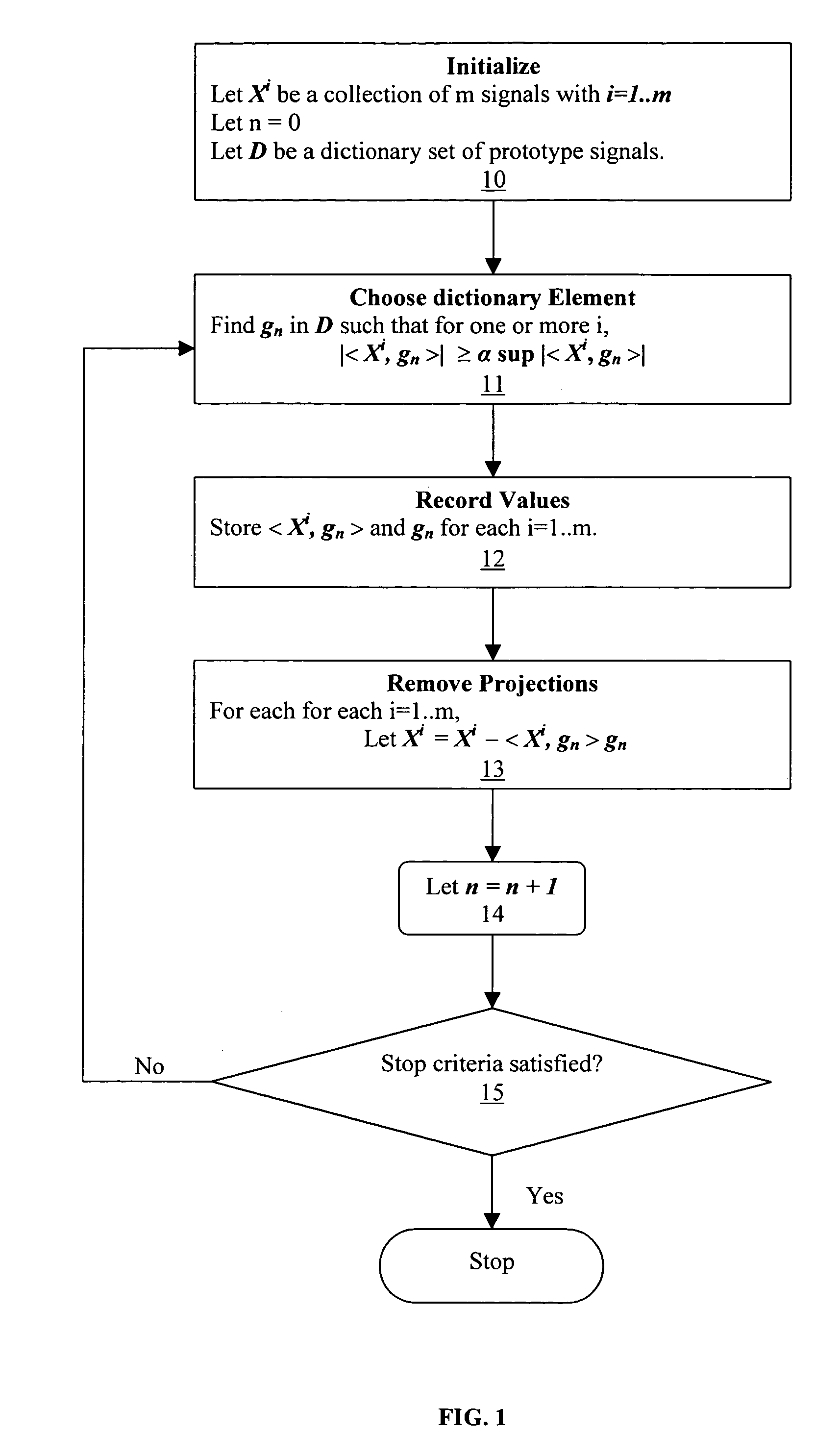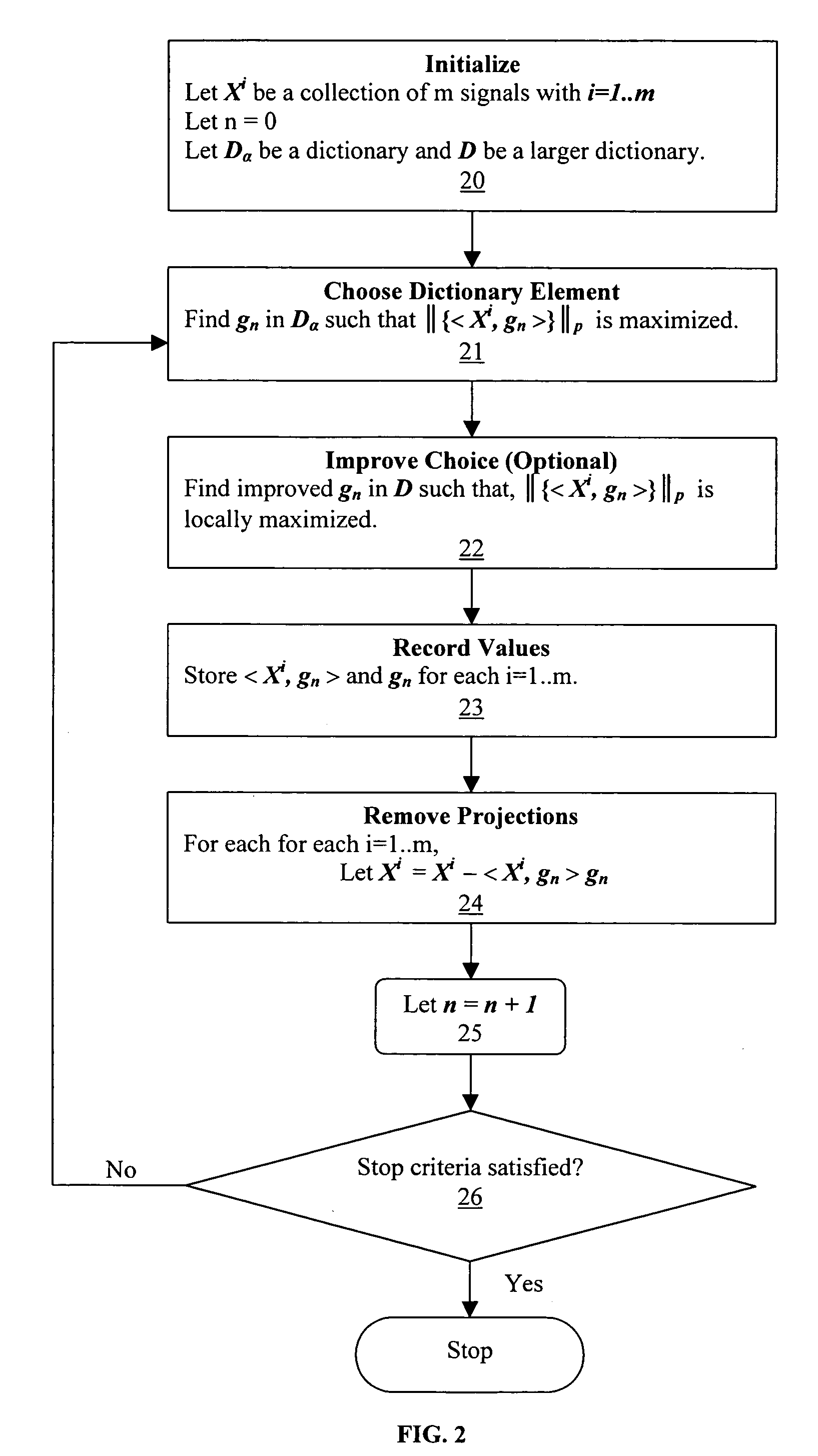Greedy adaptive signature discrimination system and method
a signature discrimination and adaptive technology, applied in the field of pattern and signal recognition and discrimination, to achieve the effect of eliminating noise from the reconstructed signal, noise reduction, and eliminating the form of jitter noise and frequency instabilities
- Summary
- Abstract
- Description
- Claims
- Application Information
AI Technical Summary
Benefits of technology
Problems solved by technology
Method used
Image
Examples
Embodiment Construction
[0063]FIG. 1 is a programmatic flowchart depicting the analysis algorithm in its most basic form. In this embodiment, the collection of signals is represented by a set of vectors, denoted Xi, where i runs from 1 to m, and m is the number of signals in the collection. Each vector is an ordered collection of samples, Xi={xi1, xi2, . . . }. The length of the vectors is not material to the algorithm; however, typically they will be of the same length in order to facilitate natural inner product comparisons. In some embodiments, these samples will represent data values of a discrete measure; in others they may be digitized approximations of continuous analog values.
[0064]The dictionary, D, represents a large collection of prototype signals. Typically these signals will be represented in the same space as the signal vectors, Xi. I.e., D will contain a collection of vectors of length similar to the signal vectors. The exact nature of D is not germane to the basic algorithm description.
[006...
PUM
 Login to View More
Login to View More Abstract
Description
Claims
Application Information
 Login to View More
Login to View More - R&D
- Intellectual Property
- Life Sciences
- Materials
- Tech Scout
- Unparalleled Data Quality
- Higher Quality Content
- 60% Fewer Hallucinations
Browse by: Latest US Patents, China's latest patents, Technical Efficacy Thesaurus, Application Domain, Technology Topic, Popular Technical Reports.
© 2025 PatSnap. All rights reserved.Legal|Privacy policy|Modern Slavery Act Transparency Statement|Sitemap|About US| Contact US: help@patsnap.com



